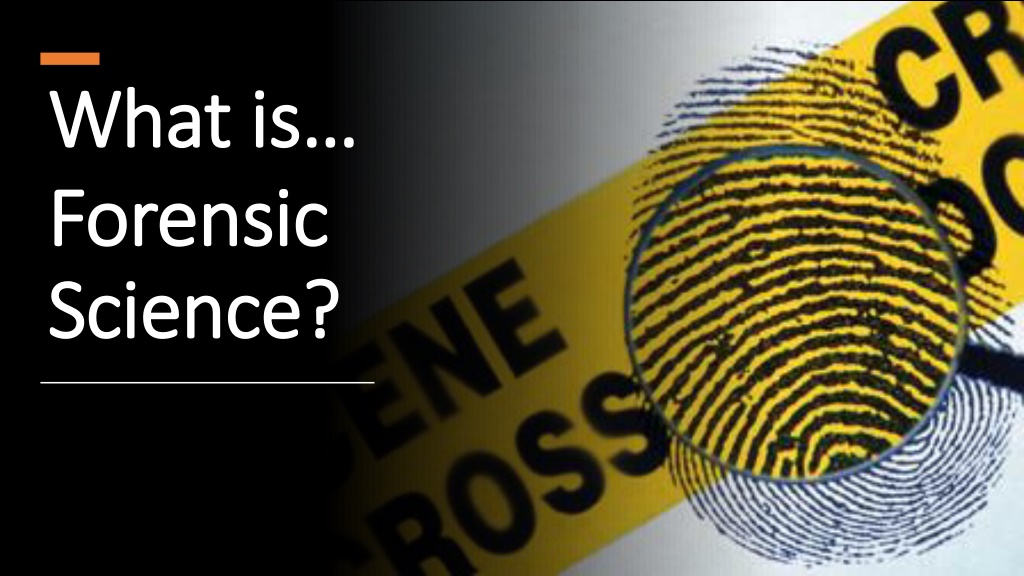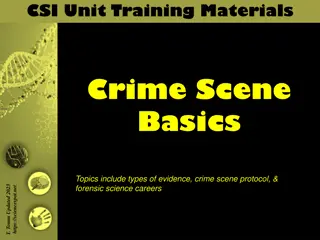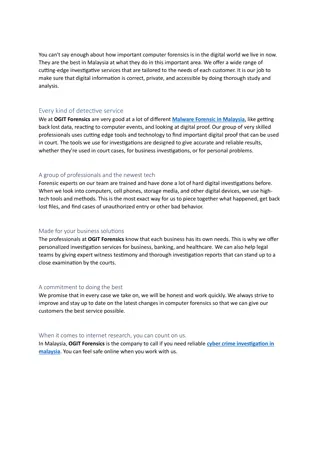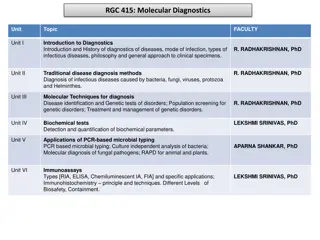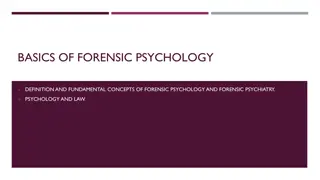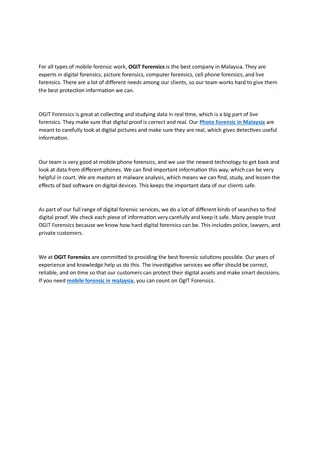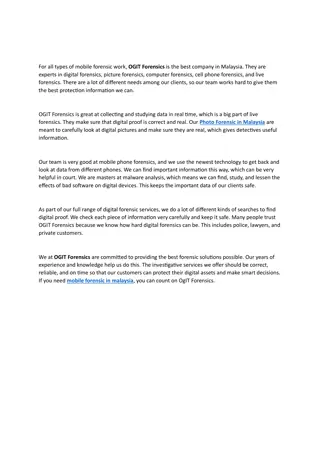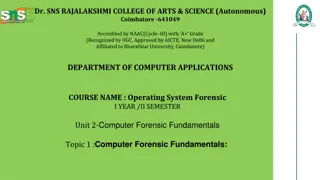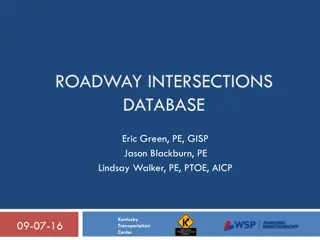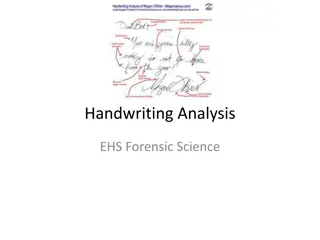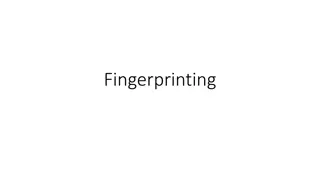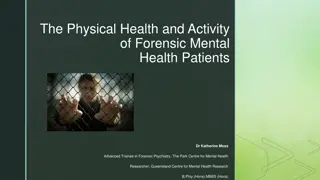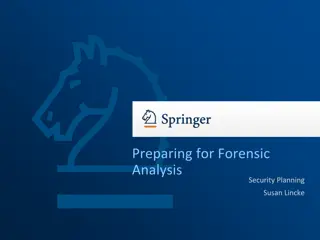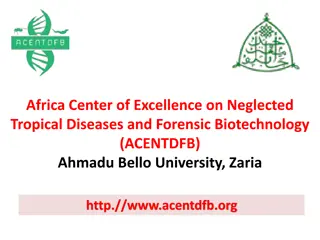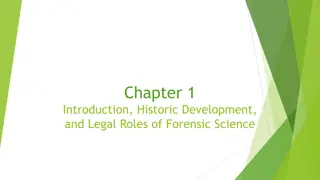Exploring Forensic Science: The Intersection of Science and Law
Forensic science, derived from the Latin word "forum," encompasses the application of scientific disciplines to the law. The Cornerstone principle highlights how every interaction involves material exchange, crucial in modern forensic investigations. Through trace evidence analysis, forensic scientists can glean valuable information.
Download Presentation

Please find below an Image/Link to download the presentation.
The content on the website is provided AS IS for your information and personal use only. It may not be sold, licensed, or shared on other websites without obtaining consent from the author. Download presentation by click this link. If you encounter any issues during the download, it is possible that the publisher has removed the file from their server.
E N D
Presentation Transcript
What is What is Forensic Forensic Science? Science?
The term forensic stems from the Latin word forum and applies to anything that relates to law. Forensic science, or criminalistics, is the application of scientific disciplines to the law.
The Cornerstone of Forensics: Locards Exchange Principle Every contact you make with another person, place, or object results in an exchange of physical materials. Eventually, where ever you go, you leave something from you behind, and you take something with you. Known as the Locard Exchange Principle, after Dr. Edmond Locard, the French police officer who first noticed it, the exchange of materials is the basis of modern forensic investigation. Using this principle, forensic scientists can determine where a suspect has been by analyzing trace evidence (any small piece of evidence) such as fibers on clothing, hair in a car, or gunk on the soles of shoes.
